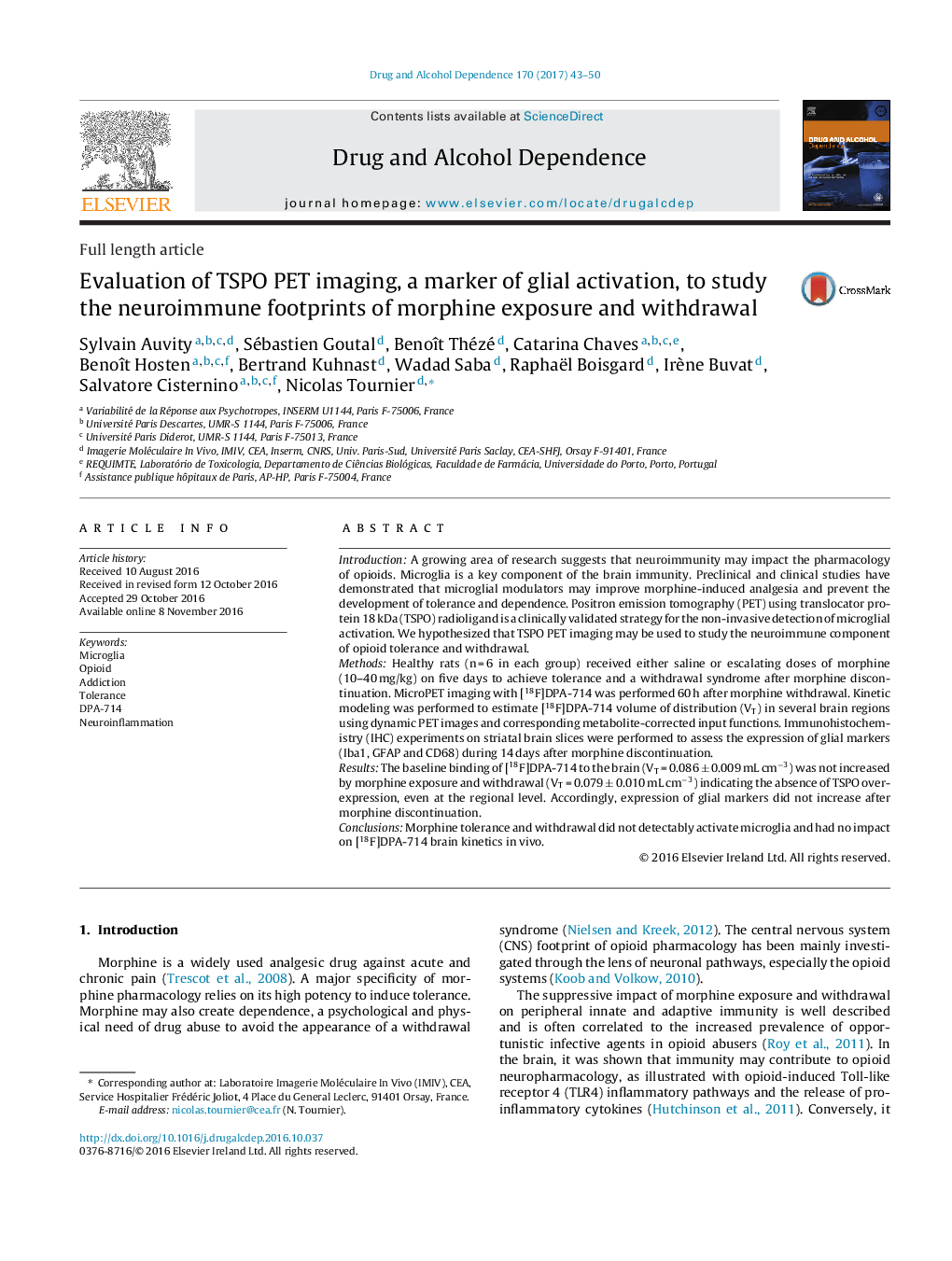| کد مقاله | کد نشریه | سال انتشار | مقاله انگلیسی | نسخه تمام متن |
|---|---|---|---|---|
| 5120295 | 1486121 | 2017 | 8 صفحه PDF | دانلود رایگان |

- Neuroimmunity is a key component of opioid pharmacology, tolerance and dependence.
- Morphine tolerance and withdrawal did not impact TSPO PET imaging in rats.
- Accordingly, no increase in Iba1, CD68 and GFAP expression could be detected.
IntroductionA growing area of research suggests that neuroimmunity may impact the pharmacology of opioids. Microglia is a key component of the brain immunity. Preclinical and clinical studies have demonstrated that microglial modulators may improve morphine-induced analgesia and prevent the development of tolerance and dependence. Positron emission tomography (PET) using translocator protein 18 kDa (TSPO) radioligand is a clinically validated strategy for the non-invasive detection of microglial activation. We hypothesized that TSPO PET imaging may be used to study the neuroimmune component of opioid tolerance and withdrawal.MethodsHealthy rats (n = 6 in each group) received either saline or escalating doses of morphine (10-40 mg/kg) on five days to achieve tolerance and a withdrawal syndrome after morphine discontinuation. MicroPET imaging with [18F]DPA-714 was performed 60 h after morphine withdrawal. Kinetic modeling was performed to estimate [18F]DPA-714 volume of distribution (VT) in several brain regions using dynamic PET images and corresponding metabolite-corrected input functions. Immunohistochemistry (IHC) experiments on striatal brain slices were performed to assess the expression of glial markers (Iba1, GFAP and CD68) during 14 days after morphine discontinuation.ResultsThe baseline binding of [18F]DPA-714 to the brain (VT = 0.086 ± 0.009 mL cmâ3) was not increased by morphine exposure and withdrawal (VT = 0.079 ± 0.010 mL cmâ3) indicating the absence of TSPO overexpression, even at the regional level. Accordingly, expression of glial markers did not increase after morphine discontinuation.ConclusionsMorphine tolerance and withdrawal did not detectably activate microglia and had no impact on [18F]DPA-714 brain kinetics in vivo.
119
Journal: Drug and Alcohol Dependence - Volume 170, 1 January 2017, Pages 43-50